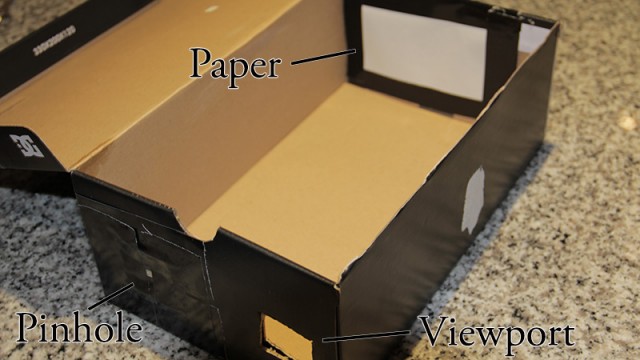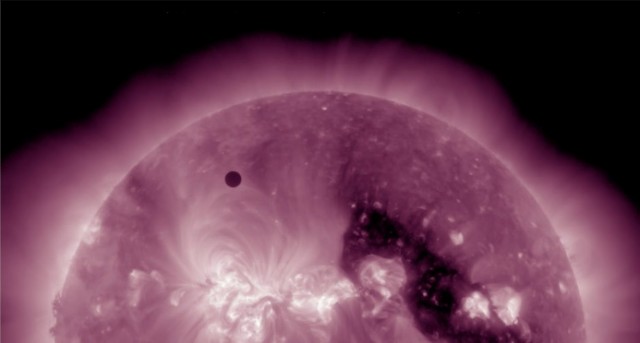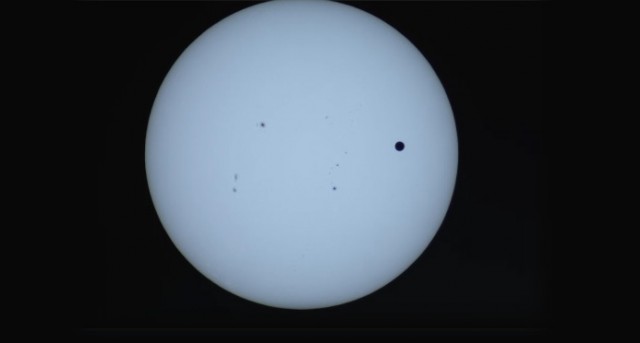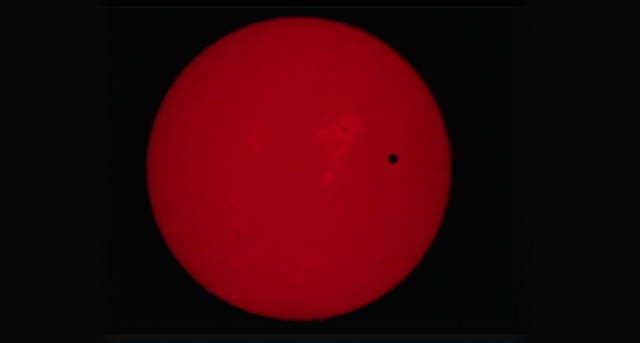Every 105.5 or 121.5 years (it alternates) our inhospitable neighbouring planet Venus transits between the Earth and the Sun, lately it’s done it twice in fairly quick succession, 8 years apart – there have been transits that weren’t paired, most recently in November 1396 – and then takes another 121.5 or 105.5 years off. Today was the second in a pair of transits (the first of this pair was in 2004), and is the last time a transit will be visible from Earth until December 2117, when everyone alive today is very likely to be dead.
Transits of Venus have a fairly significant place in the early history of New Zealand because the observation of a transit was the reason Cook was sent on his voyage of discovery to the Pacific (though he was actually in Tahiti for the transit, in 1769).
The story behind Cook’s travel to the Pacific to take observations is great, he was part of a multi-national project suggested nearly a century earlier by Edmond Halley – for whom Halley’s Comet is named – to take simultaneous observations from as many different vantages as possible, which were then used to calculate the distance from Earth to the Sun. Not an easy thing to coordinate in the 18th century.
And it’s also somewhat significant this time because we’re one of the few countries that has an unobstructed view for the full duration of the transit, all day long from mid-morning to mid-afternoon.
Unless there’s cloud cover.
We were told to expect storms, but this morning, right when the transit was starting just after 10AM, the sky was clear and the winter sun was blazing, so I quickly banged together a shadow box out of a cut open soft drink can (to provide material for the pinhole aperture), a shoe box, and a piece of paper.
The metal gets a pin hole puncture, and is then taped over a hole you cut in one end of the box, you then tape the paper to the other end, and cut a hole in the side or end of the shoe box to view through, aim the pinhole end over your shoulder at the sun, and you should see an image of the sun on the paper inside the box.
Frankly it worked embarrassingly poorly.
The image was very soft, and I couldn’t see the shadow of Venus at all. I think my aperture was too large (even though I used quite a small pinhole), which meant the focal length was shorter than it could have been, so distance from pinhole to paper was critical for focus.
On the bright side, there are thousands of professional “sun looker atters” (I think humans call them astronomers) all around the world who are very happy to share their results with us, so instead of gazing forlornly at the cloudy overcast sky, we can fire up our weboscopes and immediately see the very best shots available anywhere on Earth.
First amongst them has to be the NASA EDGE team at Mauna Kea, Hawaii. Certainly a much better picture than you’ll get with a shoebox, and actually costs slightly less ‘cos you don’t even need to buy any shoes.
Here are a couple of my favourite stills, I think this first one is shot using a 211 Ã… filter, which shows the corona very nicely. Technical details aside, it looks really great.
I think this one is taken using a continuum 4500 Ã… filter, which is essentially white light, and clearly shows the photosphere of the sun – hence being able to see the small dark sunspots, as well as the large silhouette of Venus.
This amazing shot is from the Atmospheric Imaging Assembly at NASA’s Solar Dynamic’s Observatory.
And here’s another one, quite similar to the white light shot above, but the sunspots aren’t visible, and I have no idea (at all) what filter is used:
And last by by no means least, here’s a short video clip of the full transit compressed down to just half a minute, this uses a 171 Ã…Â filter. This video is from the Atmospheric Imaging Assembly at NASA’s SDO.
[youtube]http://www.youtube.com/watch?v=QX6BbP1wAIs[/youtube]





